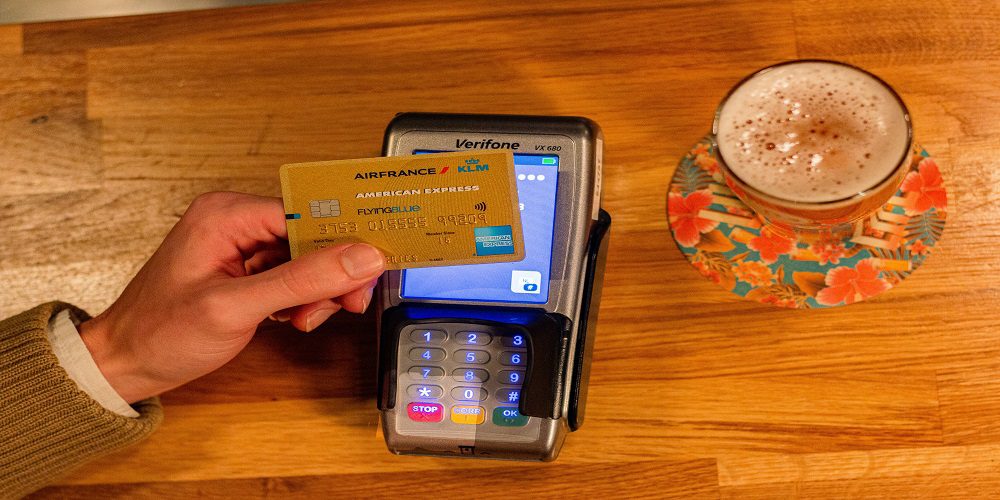Welcome to our in-depth analysis of credit cards in the USA, a financial tool that has woven itself into the very fabric of American spending habits. From providing instant purchasing power to offering lucrative rewards, credit cards have become an indispensable part of our lives. In this blog post, we will dive deep into the world of plastic money and explore why it holds such a special place in the hearts and wallets of millions across the nation.
Introduction to Credit Cards in the USA
Credit cards have become an integral part of the American financial landscape, with over 70% of adults in the United States owning at least one credit card. These small plastic cards have revolutionized the way people shop and manage their finances, making transactions quicker and easier than ever before.
But what exactly are credit cards, and how do they work? In this section, we will provide a comprehensive introduction to credit cards in the USA, covering everything from their basic features to their impact on consumer spending habits.
To put it simply, a credit card is a payment card that allows you to borrow money from a bank or financial institution up to a certain limit. Unlike debit cards, which deduct funds directly from your checking account, credit cards allow you to make purchases on credit and pay off the balance at a later date. This means that you can buy goods and services without having the necessary funds available at that moment.
In the USA, there are various types of credit cards offered by different banks and financial institutions. The most common type is known as unsecured credit cards, which do not require any collateral or security deposit. These are based on your creditworthiness and income level. On the other hand, secured credit cards require a security deposit upfront, which acts as collateral for your line of credit.
History and Evolution of Credit Cards in the USA
The use of credit has been a key aspect of the American financial landscape for centuries. However, the history of credit cards in the USA began much more recently. In this section, we will take a closer look at the evolution of credit cards in America and how they have become an integral part of daily life for many Americans.
Early Beginnings: Charge Cards
The concept of using a card to make purchases dates back to the late 19th century, when merchants would extend lines of credit to their customers in the form of “charge coins” or metal tokens with identification numbers. These coins were used to keep track of customers’ purchases and account balances.
In 1914, Western Union introduced metal charge plates that had customer information imprinted on them. These plates were used by department stores and other businesses to keep track of customers’ charges.
Diners Club, which started as a way for business travelers to charge meals while on the road, is credited with creating the first modern credit card in 1950. The Diners Club card was initially intended for use only at restaurants but eventually expanded its offerings to include travel and entertainment expenses.
Credit Cards in the USA
1. Visa
In the United States, credit cards have become a ubiquitous part of daily life. From making everyday purchases to booking travel and accommodations, having a credit card has become essential for many Americans. However, not all credit cards are created equal, and one type that stands out is the Visa card.
Visa is one of the largest payment networks in the world, with over 3 billion cards in circulation globally. In 2020 alone, Visa processed over $11 trillion worth of transactions in the U.S., making it a popular choice among consumers and merchants alike.
2. Mastercard
Mastercard is one of the most widely recognized and accepted credit card brands globally, and it holds a significant share in the U.S. market as well. The company was founded in 1966 and has since grown to become one of the leading payment solution providers worldwide.
In the United States, Mastercard is known for its diverse range of credit card options, catering to different needs and lifestyles. From premium travel cards to no-annual fee options, Mastercard offers something for everyone. It also partners with various banks and financial institutions in the country to issue their credit cards, making them easily accessible to consumers.
One of the key features that makes Mastercard stand out among other credit card brands is its advanced security measures. With an increasing number of cyber threats and frauds, Mastercard has invested heavily in developing innovative security technologies to protect its customers’ sensitive information. These include EMV chip technology for secure transactions, tokenization for online purchases, real-time fraud monitoring systems, and biometric authentication methods like fingerprint or facial recognition.
3. American Express
American Express, also known as Amex, is one of the most well-known credit card companies in the United States. Founded in 1850, American Express has been a major player in the financial industry for over 170 years. It is considered one of the top three credit card networks, along with Visa and Mastercard.
One of the main reasons for American Express’s popularity among consumers and businesses is its reputation for excellent customer service and exclusive benefits. The company offers a wide range of credit cards to cater to different needs and preferences. Whether you are looking for cashback rewards, travel perks, or low interest rates, there is an American Express card that can meet your specific requirements.
One unique feature of American Express is its charge cards. These cards have no preset spending limits but require full payment at the end of each billing cycle. This makes them ideal for individuals who want to limit their spending or businesses that need flexibility in their cash flow management.
Tips for Choosing the Right Credit Card for Your Needs
When it comes to choosing the right credit card, there are several important factors to consider. With so many options available on the market, it can be overwhelming and confusing to decide which one is best suited for your needs. In this section, we will discuss some tips that can help you make an informed decision while choosing a credit card.
1. Understand Your Spending Habits: The first step in selecting a credit card is to analyze your spending habits. Look at how much you spend on different categories, such as groceries, dining out, travel, etc. This will give you an idea of where most of your expenses go and which types of rewards or benefits would be most beneficial for you.
2. Know Your Credit Score: Your credit score plays a crucial role in determining the type of credit cards you qualify for and the interest rates offered to you. It is recommended to check your credit score before applying for a new card, as a low score can lead to rejection or higher interest rates.
3. Consider the Annual Fees: Many credit cards come with an annual fee that ranges from $0-$500+. While some premium cards may offer attractive rewards and perks, they might not be worth it if you are not utilizing them enough to justify the annual fee.
4. Compare Rewards Programs: Different credit cards offer various types of rewards, such as cashback, points, miles, etc. Consider which type of reward program aligns with your spending habits and offers the most value for your money.
5. Interest Rates: If you tend to carry a balance on your credit card, then the interest rate should be one of your top considerations. Look for cards that offer low interest rates to avoid paying high fees on outstanding balances.
6. Additional Benefits: Many credit cards come with additional benefits such as travel insurance, purchase protection, an extended warranty, etc. Consider these perks and see if they are beneficial for you.
7. Read the Fine Print: It is crucial to read the terms and conditions of any credit card carefully before applying for it. Look for any hidden fees, penalties, or limitations that may impact your decision.
How to Apply for a Credit in the USA
Applying for a credit card is a big decision, especially in the USA, where there are numerous options available. It can be overwhelming to navigate through the application process and understand all the terms and conditions associated with each credit card. However, with proper research and understanding of your financial needs, applying for a credit card can be a beneficial step towards building your credit history and managing your finances.
Here are some steps you can follow to apply for a credit card in the USA:
1. Determine your financial goals: Before you start looking for different credit cards, it is important to evaluate your financial needs and goals. Are you looking to build your credit score? Do you want to earn rewards on your purchases? Understanding your objectives will help you narrow down the type of credit card that best suits your needs.
2. Check Credit Score: In order to qualify for most credit cards in the USA, you need to have a good credit score. This is an important factor that determines whether or not you will be approved for a particular card and what interest rate you may receive. You can check your credit score for free through various online platforms, such as Credit Karma or AnnualCreditReport.com.
3. Research different types of credit cards: There are various types of credit cards available in the market, such as secured, unsecured, rewards-based, balance transfer, etc. Each type has its own benefits and features, so it’s important to research and compare different options before making a decision.
4. Gather necessary documents: Once you have selected the credit card you want to apply for, gather all the necessary documents that will be required during the application process. These may include your social security number, proof of income, and a government-issued ID.
5. Apply online or in person: Most credit card issuers allow you to apply for a credit card online through their website. You can also visit a bank branch or retail store to apply in person. Make sure you have all the required information and documents with you before starting the application.
6. Fill out the application. The credit card application will ask for personal information such as your name, address, date of birth, annual income, etc. Be sure to fill out all the fields accurately and honestly.
Conclusion
Credit cards have undoubtedly become an integral part of the American financial landscape. They offer convenience and rewards, but they also come with potential risks if not used responsibly. As the industry continues to evolve and adapt to changing consumer habits, it is crucial for individuals to educate themselves on responsible credit card usage to ensure a healthy financial future.

































